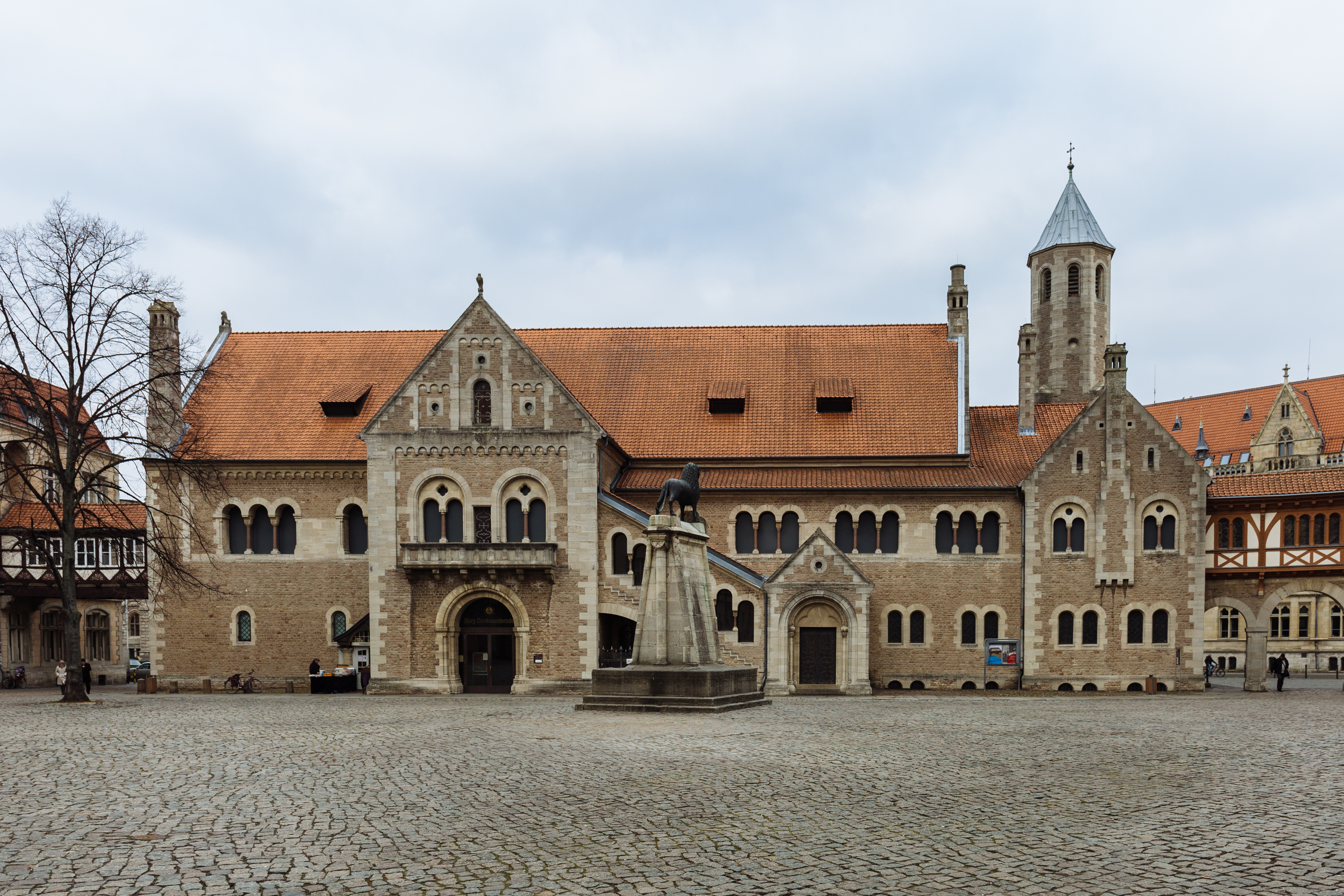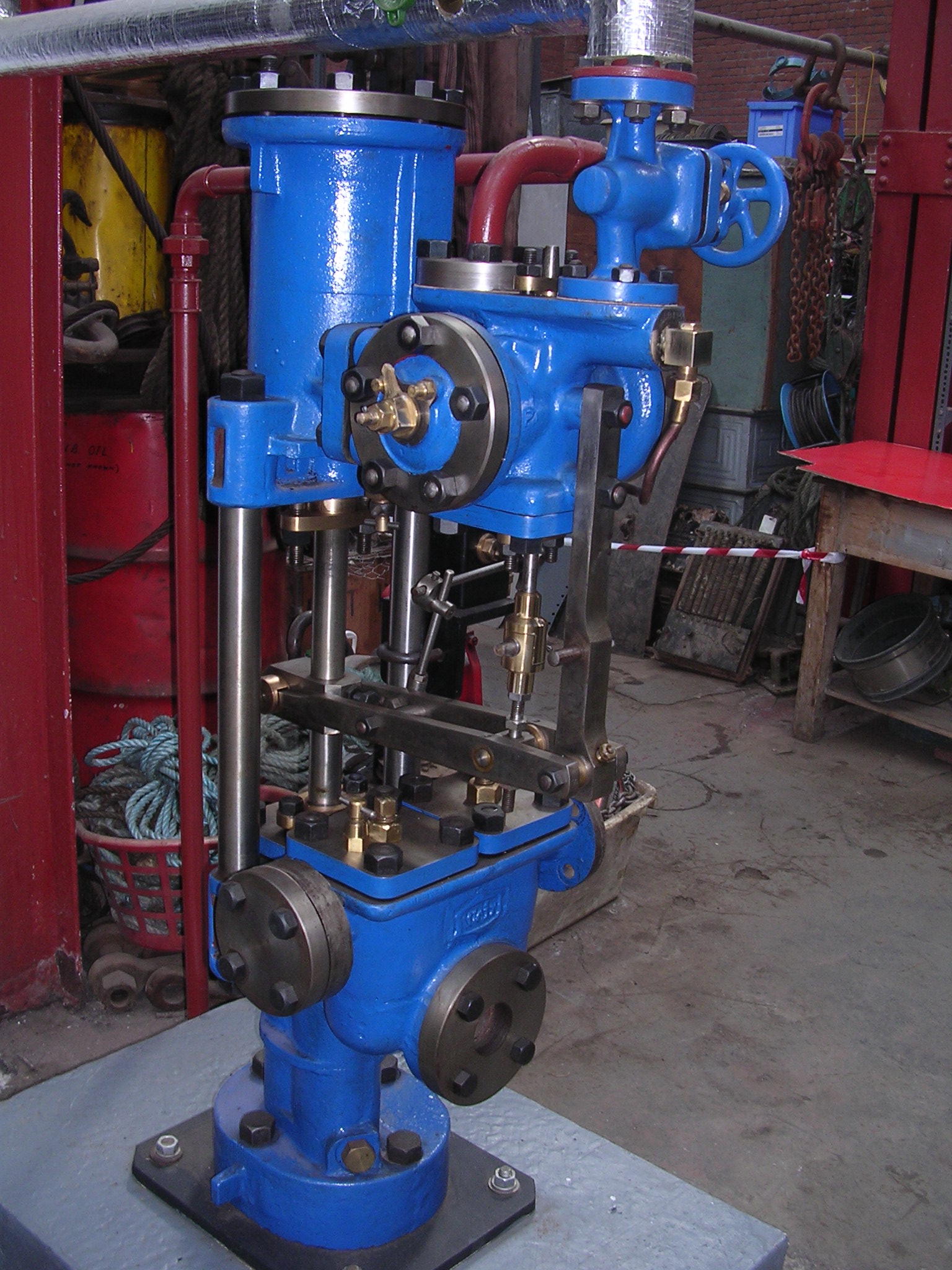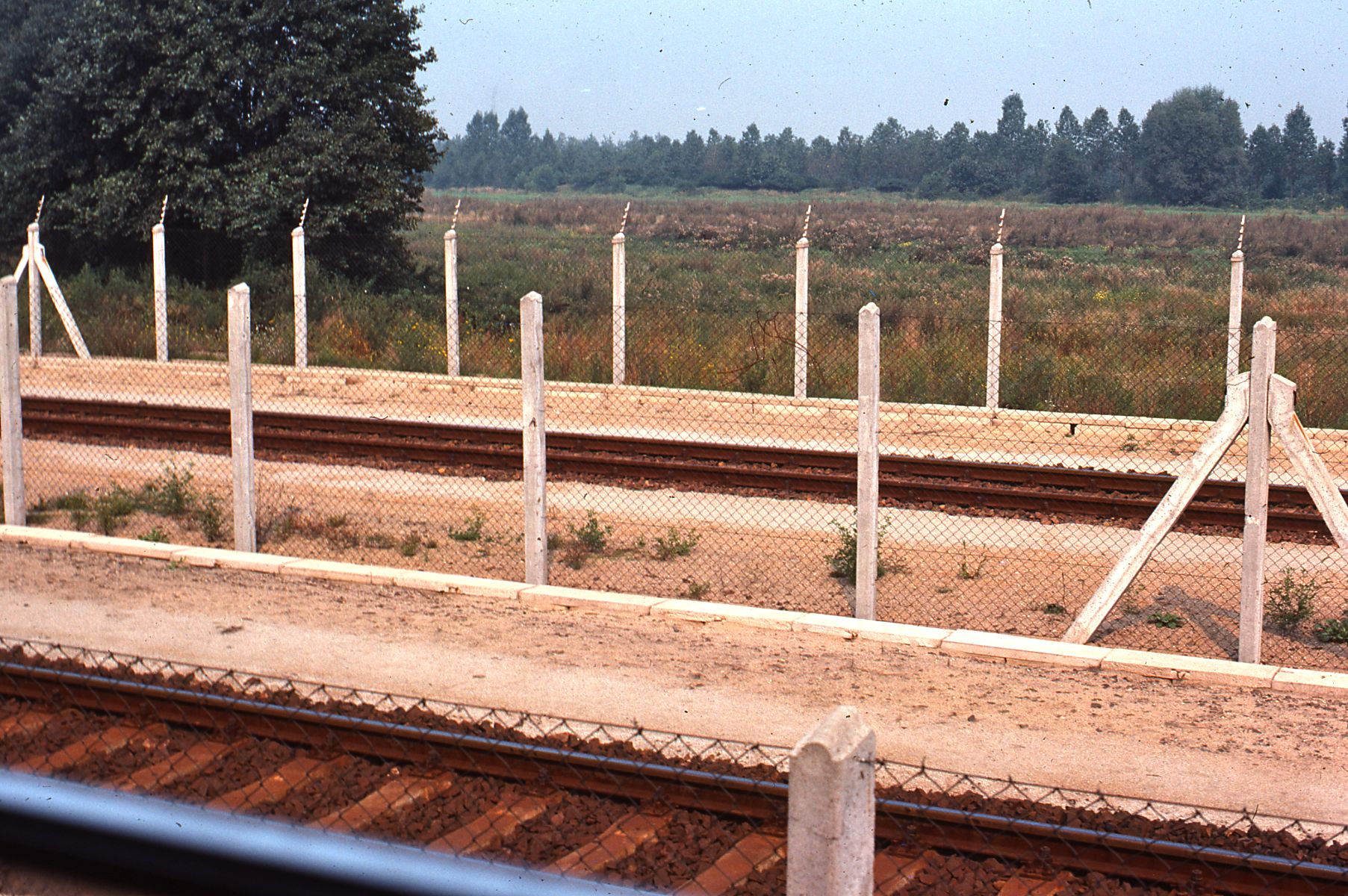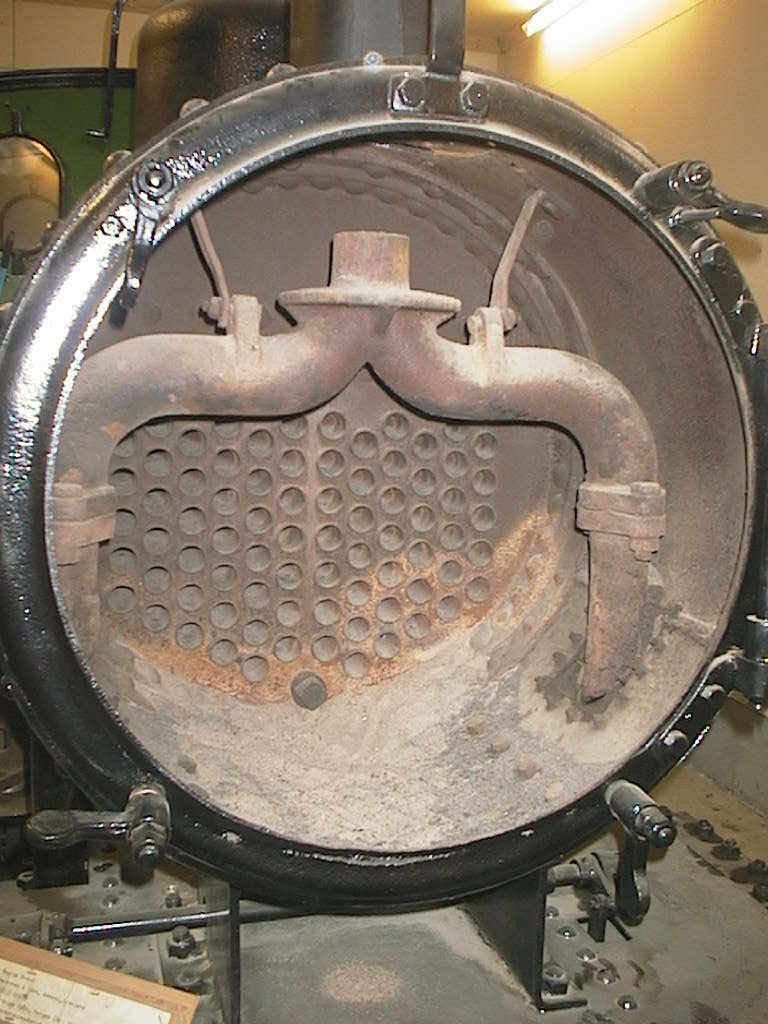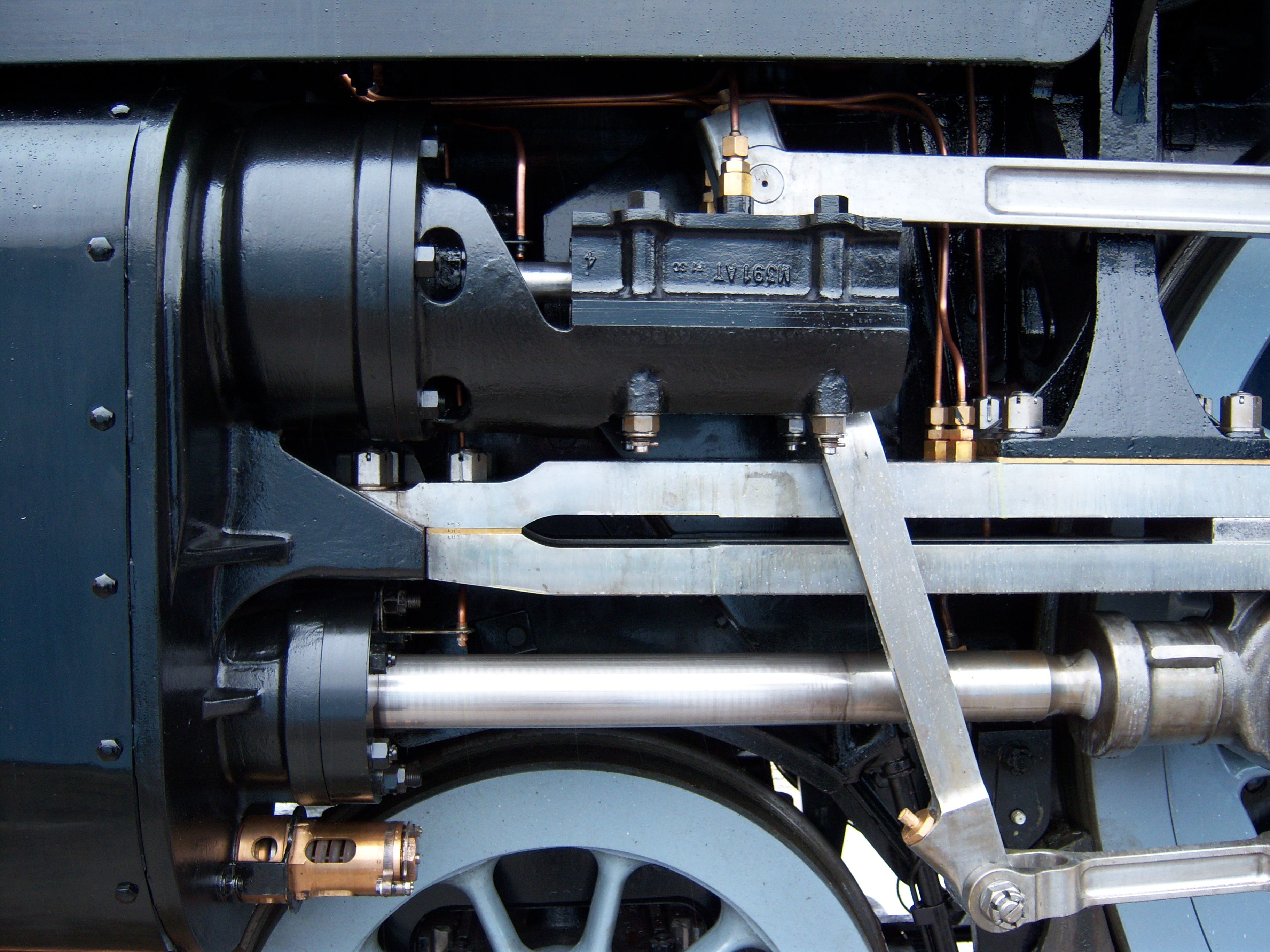|
DRG Class 03
The Class 03 steam engines were standard express train locomotives ('' Einheitslokomotiven'') in service with the Deutsche Reichsbahn. History The Class 03 engines were built between 1930 and 1938 as express train locomotives for routes that were only suitable for axle loads of up to 18 tonnes. 298 examples of this engine, whose construction was based on the Class 01, were built by the firms of Borsig, Krupp, Henschel, and Schwartzkopff. Its reduced weight was achieved by the use of a light sectional frame, smaller boiler and smaller cylinders. From engine number 03 123 onwards the pumps were located in the centre of the locomotive and from number 03 163 the locos had larger leading wheels. Locomotive number 03 154 was equipped with a parabolic smokebox door, a tapered driver's cab and driving gear cover plates. Number 03 193 was given a wine-red, streamlined, full covering and a 2′3 T 37 St tender, in order to repla ... [...More Info...] [...Related Items...] OR: [Wikipedia] [Google] [Baidu] |
Borsig (company)
Johann Karl Friedrich August Borsig (23 June 1804 – 6 July 1854) was a German businessman who founded the ''Borsig-Werke'' factory. Borsig was born in Breslau (Wrocław), the son of cuirassier and carpenter foreman Johann George Borsig. After learning his father's trade, he first attended the ''Königliche Provinzial-Kunst- und Bauschule'' (Royal Provincial Art and Building school), then until fall of 1825 the ''Königliche Gewerbe-Institut'' (Royal Institute of Trade). He received his practical training in engine construction at the ''Neue Berliner Eisengießerei'' (New Iron Foundry of Berlin) of F. A. Egells, where one of his first tasks was the assembly of a steam engine in Waldenburg, Silesia. After the successful completion of this task, Borsig was made factory manager for eight years. In 1828, he married Louise Pahl; they had one son, Albert. August Borsig and his company From early on, Borsig was a supporter of railroads. Despite the lack of experience with railroad ... [...More Info...] [...Related Items...] OR: [Wikipedia] [Google] [Baidu] |
Borsig Lokomotiv Werke (AEG)
The rail vehicle factory in Hennigsdorf, Germany, was founded in 1910 by AEG. Locomotive production began in 1913, and in the 1930s absorbed the work of the August Borsig locomotive factory, being renamed the Borsig Lokomotiv Werke GmbH until 1944. After the Second World War the factory was nationalised in the German Democratic Republic and produced electric locomotives for home use and for export, mainly to Communist Bloc countries under the name Lokomotivbau-Elektrotechnische Werke (LEW). After German reunification in 1990, the plant returned to AEG ownership, becoming AEG Schienenfahrzeuge GmbH, and then passed through mergers of its parent companies to Adtranz (1996), Bombardier Transportation (2001) and then Alstom (2021). Under Adtranz's ownership production of locomotives ended, and the site now manufactures diesel and electric multiple units. History In 1910 the AEG company acquired a of land in Hennigsdorf near Berlin for the creation of a ceramics factory which began ... [...More Info...] [...Related Items...] OR: [Wikipedia] [Google] [Baidu] |
Hamburg-Altona
Altona (), also called Hamburg-Altona, is the westernmost urban borough (''Bezirk'') of the German city state of Hamburg, on the right bank of the Elbe river. From 1640 to 1864, Altona was under the administration of the Danish monarchy. Altona was an independent borough until 1937. In 2016 the population was 270,263. History Altona was founded in 1535 as a village of fishermen in what was then Holstein-Pinneberg. In 1640, Altona came under Danish rule as part of Holstein-Glückstadt, and in 1664 was granted municipal rights by the Danish King Frederik III, who then ruled in personal union as Duke of Holstein. Altona was one of the Danish monarchy's most important harbor towns. The railroad from Altona to Kiel, the Hamburg-Altona–Kiel railway ( da, link=no, Christian VIII Østersø Jernbane), was opened in 1844. Because of severe restrictions on the number of Jews allowed to live in Hamburg until 1864 (with the exception of 1811–1815), a major Jewish community develope ... [...More Info...] [...Related Items...] OR: [Wikipedia] [Google] [Baidu] |
Braunschweig
Braunschweig () or Brunswick ( , from Low German ''Brunswiek'' , Braunschweig dialect: ''Bronswiek'') is a city in Lower Saxony, Germany, north of the Harz Mountains at the farthest navigable point of the river Oker, which connects it to the North Sea via the rivers Aller and Weser. In 2016, it had a population of 250,704. A powerful and influential centre of commerce in medieval Germany, Brunswick was a member of the Hanseatic League from the 13th until the 17th century. It was the capital city of three successive states: the Principality of Brunswick-Wolfenbüttel (1269–1432, 1754–1807, and 1813–1814), the Duchy of Brunswick (1814–1918), and the Free State of Brunswick (1918–1946). Today, Brunswick is the second-largest city in Lower Saxony and a major centre of scientific research and development. History Foundation and early history The date and circumstances of the town's foundation are unknown. Tradition maintains that Brunswick was created through t ... [...More Info...] [...Related Items...] OR: [Wikipedia] [Google] [Baidu] |
Driving Wheels
On a steam locomotive, a driving wheel is a powered wheel which is driven by the locomotive's pistons (or turbine, in the case of a steam turbine locomotive). On a conventional, non-articulated locomotive, the driving wheels are all coupled together with side rods (also known as coupling rods); normally one pair is directly driven by the main rod (or connecting rod) which is connected to the end of the piston rod; power is transmitted to the others through the side rods. On diesel and electric locomotives, the driving wheels may be directly driven by the traction motors. Coupling rods are not usually used, and it is quite common for each axle to have its own motor. Jackshaft drive and coupling rods were used in the past (e.g. in the Swiss Crocodile locomotive) but their use is now confined to shunting locomotives. On an articulated locomotive or a duplex locomotive, driving wheels are grouped into sets which are linked together within the set. Diameter Driving wheels a ... [...More Info...] [...Related Items...] OR: [Wikipedia] [Google] [Baidu] |
Feed Pump
A boiler feedwater pump is a specific type of pump used to pump feedwater into a steam boiler. The water may be freshly supplied or returning condensate produced as a result of the condensation of the steam produced by the boiler. These pumps are normally high pressure units that take suction from a condensate return system and can be of the centrifugal pump type or positive displacement type. Construction and operation Feedwater pumps range in size up to many kilowatts and the electric motor is usually separated from the pump body by some form of mechanical coupling. Large industrial condensate pumps may also serve as the feedwater pump. In either case, to force the water into the boiler, the pump must generate sufficient pressure to overcome the steam pressure developed by the boiler. This is usually accomplished through the use of a centrifugal pump. Another common form of feedwater pump runs constantly and is provided with a minimum flow device to stop overpressuring the ... [...More Info...] [...Related Items...] OR: [Wikipedia] [Google] [Baidu] |
Deutsche Bundesbahn
The Deutsche Bundesbahn or DB (German Federal Railway) was formed as the state railway of the newly established Federal Republic of Germany (FRG) on 7 September 1949 as a successor of the Deutsche Reichsbahn-Gesellschaft (DRG). The DB remained the state railway of West Germany until after German reunification, when it was merged with the former East German Deutsche Reichsbahn (DR) to form Deutsche Bahn, which came into existence on 1 January 1994. Background After World War II, each of the military governments of the Allied Occupation Zones in Germany were ''de facto'' in charge of the German railways in their respective territories. On 10 October 1946, the railways in the British and American occupation zones formed the ''Deutsche Reichsbahn im Vereinigten Wirtschaftsgebiet'' (German Imperial Railway in the united economic area), while on 25 June 1947, the provinces under French occupation formed the Südwestdeutsche Eisenbahn. With the formation of the FRG these succes ... [...More Info...] [...Related Items...] OR: [Wikipedia] [Google] [Baidu] |
Lentz Valve Gear
Lentz is a Germanic surname. People Notable people with the surname include: * Bryan Lentz (born 1964), attorney and former Pennsylvania legislator * Carl Lentz American pastor, former lead pastor of Hillsong Church NYC * Daniel Lentz (born 1942), American composer * Georges Lentz (born 1965), Luxembourgish/Australian composer * Hugo Lentz, (1859–1944), Austrian mechanical engineer and inventor * Jim Lentz (born c. 1955), CEO of Toyota Motor North America * Matt Lentz (born 1982), American football player * Michael Lentz (born 1964), German writer and musician * Michel Lentz (1820–1893), Luxembourgish poet * Nic Lentz (born 1989), professional baseball umpire * Nik Lentz Nik Lentz (born August 13, 1984) is an American retired mixed martial artist. He most notably fought for the Ultimate Fighting Championship, fighting in the lightweight division. Background Lentz was born in El Paso, Texas but grew up in Twin C ... (born 1984), American mixed martial artist * Ow ... [...More Info...] [...Related Items...] OR: [Wikipedia] [Google] [Baidu] |
DRG Class 05
The Deutsche Reichsbahn's Class 05 was a German class of three express passenger steam locomotives of 4-6-4 wheel arrangement in the Whyte notation, or 2′C2′ h3 in the UIC notation used in continental Europe. They were part of the DRG's standard locomotive ('' Einheitslokomotive'') series. Pre World War II history Since the success of the diesel high speed trains like the Flying Hamburger in the middle of the 1930s, the German locomotive industry turned to faster steam locomotives. After speed tests with a streamlined DRG Class 03 the Borsig locomotive factories produced three engines: * 05 001 as streamlined in 1935 * 05 002 as streamlined in 1935; This engine broke the world speed record in 1936 at 124.5 mph (200.4 km/h) * 05 003 as cab forward streamlined in 1937 The locomotives did regular service in FD express passenger trains, e.g. FD 23 from Hamburg to Berlin. The design speed was 175 km/h (109 mph). In 1944, the streamline plates were r ... [...More Info...] [...Related Items...] OR: [Wikipedia] [Google] [Baidu] |
Smokebox
A smokebox is one of the major basic parts of a steam locomotive exhaust system. Smoke and hot gases pass from the firebox through tubes where they pass heat to the surrounding water in the boiler. The smoke then enters the smokebox, and is exhausted to the atmosphere through the chimney (or funnel). Early locomotives had no smokebox and relied on a long chimney to provide natural draught for the fire but smokeboxes were soon included in the design for two specific reasons. Firstly and most importantly, the blast of exhaust steam from the cylinders, when directed upwards through an airtight smokebox with an appropriate design of exhaust nozzle, effectively draws hot gases through the boiler tubes and flues and, consequently, fresh combustion air into the firebox. Secondly, the smokebox provides a convenient collection point for ash and cinders ("char") drawn through the boiler tubes, which can be easily cleaned out at the end of a working day. Without a smokebox, all char mus ... [...More Info...] [...Related Items...] OR: [Wikipedia] [Google] [Baidu] |
Leading Wheels
The leading wheel or leading axle or pilot wheel of a steam locomotive is an unpowered wheel or axle located in front of the driving wheels. The axle or axles of the leading wheels are normally located on a leading truck. Leading wheels are used to help the locomotive negotiate curves and to support the front portion of the boiler. Overview Importantly, the leading bogie does not have simple rotational motion about a vertical pivot, as might first be thought. It must also be free to slip sideways to a small extent, otherwise the locomotive is unable to follow curves accurately, and some kind of springing mechanism is normally included to control that movement and provide a tendency to return to centre. A sliding bogie of that type was patented by William Adams in 1865. The first use of leading wheels is commonly attributed to John B. Jervis, who employed them in his 1832 design for a locomotive with four leading wheels and two driving wheels (a type that became known as the ' ... [...More Info...] [...Related Items...] OR: [Wikipedia] [Google] [Baidu] |
Cylinder (steam Locomotive)
The cylinder is the power-producing element of the steam engine powering a steam locomotive. The cylinder is made pressure-tight with end covers and a piston; a valve distributes the steam to the ends of the cylinder. Cylinders were cast in iron and later made of steel. The cylinder casting includes other features such as (in the case of the early Rocket locomotive) valve ports and mounting feet. The last big American locomotives incorporated the cylinders as part of huge one-piece steel castings that were the main frame of the locomotive. Renewable wearing surfaces were needed inside the cylinders and provided by cast-iron bushings. The way the valve controlled the steam entering and leaving the cylinder was known as steam distribution and shown by the shape of the indicator diagram. What happened to the steam inside the cylinder was assessed separately from what happened in the boiler and how much friction the moving machinery had to cope with. This assessment was known as ... [...More Info...] [...Related Items...] OR: [Wikipedia] [Google] [Baidu] |


